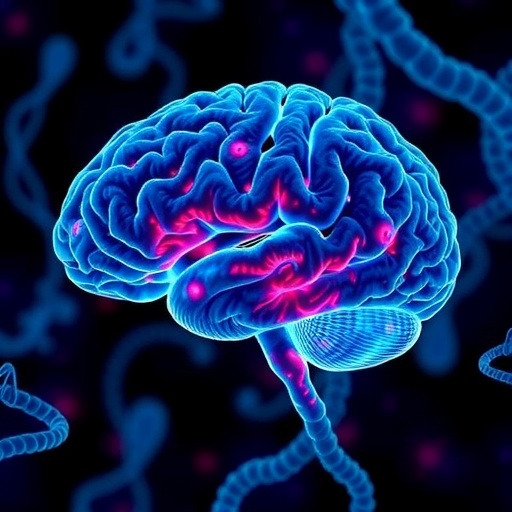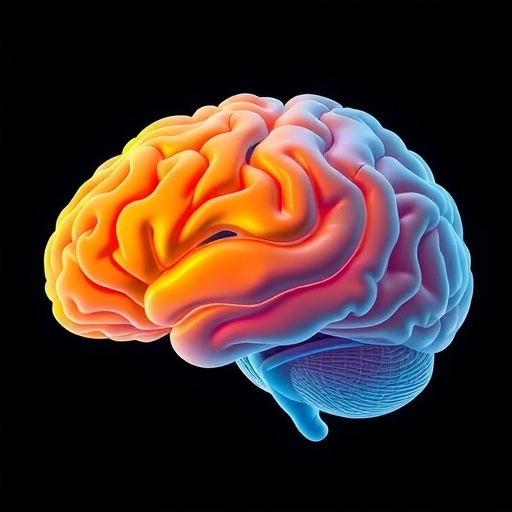The enigma of memory has long captivated neuroscientists, particularly the question of how experiences are imprinted onto the brain for days, weeks, or even months. Despite extensive research, the molecular underpinnings enabling such long-term memory persistence have remained elusive. A groundbreaking study, recently published in Nature, steps into this gap by elucidating how distinct transcriptional programs within the thalamocortical circuit govern the consolidation and longevity of memories.
In their innovative approach, researchers developed a sophisticated behavioral paradigm in mice, wherein multiple memories were formed but only selectively consolidated—some memories were preserved, while others faded over several weeks. This selective consolidation offered a unique window into the molecular divergences between retained and forgotten memories, enabling the team to probe the underlying cellular machinations that dictate memory fate.
By employing advanced transcriptomic analyses, the scientists unveiled that memory persistence corresponds with discrete waves of transcriptional activity within the thalamocortical circuit. These waves symbolize cellular macrostates—broad molecular configurations that emerge sequentially following memory acquisition. Crucially, each macrostate comprises distinct patterns of gene expression tightly controlled by specific transcriptional regulators, highlighting a temporal choreography of molecular events underpinning memory stabilization.
Among the most striking findings is the identification of a critical cascade of three transcription factors—CAMTA1, TCF4, and ASH1L—that function at successively later time points to sustain memory over progressively longer durations. CAMTA1, a calmodulin-dependent transcription factor, is pivotal for maintaining memory in the initial days post-formation. Its activity serves as a molecular gatekeeper ensuring that nascent memory traces are preserved beyond the fleeting phase of acquisition.
Following this initial maintenance phase, TCF4, another transcription factor, emerges as essential during the intermediate phase, operating days after memory formation to reinforce and extend memory persistence. This marks a transition from early stabilization mediated by CAMTA1 to a more entrenched molecular state governed by TCF4, signifying layered regulation within the memory consolidation timeline.
At the longest timescale, spanning multiple weeks, the histone methyltransferase ASH1L plays a vital role. By modifying chromatin structure, ASH1L facilitates epigenetic stabilization, locking the memory trace into a durable molecular framework within the thalamocortical circuitry. This sequential recruitment—from CAMTA1 to TCF4 to ASH1L—reveals a nuanced, time-dependent transcriptional cascade fundamental to memory longevity.
To interrogate causality, the research team used targeted CRISPR-based knockouts to selectively disrupt these transcriptional regulators within the thalamocortical circuit. Intriguingly, these perturbations had no impact on initial memory formation, underscoring that the acute encoding of memories is molecularly distinct from their long-term retention. However, knocking out CAMTA1, TCF4, or ASH1L led to pronounced deficits in stabilizing memories over respective timescales, demonstrating their indispensable roles in memory maintenance rather than encoding.
This discovery importantly reframes our understanding of memory stabilization as not a single static process but a dynamic sequence of transcriptional changes, where specific molecular gates operate at discrete intervals post-learning. Such a model emphasizes that the brain enlists a circuit-specific, temporally coordinated program to convert fragile short-term memories into robust long-term engrams.
The choice of the thalamocortical circuit as the locus of these investigations is notable. This circuit is vital for integrating sensory information and enabling higher cognitive functions, serving as a convergence hub for distributed neural networks. That memory consolidation hinges on transcriptional regulation within this specific pathway underscores the circuit’s centrality in sustaining complex mnemonic functions over time.
Beyond mechanistic insights, these findings open promising avenues for therapeutic intervention. Memory disorders afflicting millions worldwide—from Alzheimer’s disease to post-traumatic stress disorder—involve dysfunctional memory stabilization. Understanding the CAMTA1–TCF4–ASH1L cascade offers potential molecular targets to bolster memory retention or selectively erase maladaptive memories by modulating this transcriptional axis.
Furthermore, the study challenges the conventional dichotomy between synaptic plasticity and gene expression in memory research by highlighting their intertwined roles. Here, transcriptional programs orchestrate cellular states that stabilize synaptic changes, bridging molecular and circuit-level phenomena. This integrative perspective could transform strategies aimed at enhancing cognitive resilience or reversing memory decay.
In summary, this landmark research propels the field closer to deciphering one of neuroscience’s great puzzles—the molecular gateway from fleeting experience to lasting memory. By delineating a temporal transcriptional cascade within the thalamocortical circuit, the study establishes a foundational model for memory stabilization over time. As our grasp of these processes deepens, so too does the prospect of manipulating memory with unprecedented precision and efficacy.
The identification of a small cadre of transcription factors orchestrating vast transcriptional landscapes to define enduring memory states highlights the elegance and specificity of the brain’s molecular machinery. Importantly, the temporal segregation of their roles delineates distinct therapeutic windows, facilitating targeted interventions tailored to different memory phases.
Moving forward, expanding this framework to other brain regions and memory types will be crucial to establish its generalizability and refine our understanding of memory stability’s molecular architecture. The integration of cutting-edge genetic tools with longitudinal behavioral paradigms promises to unlock further secrets of how experience imprints the living brain.
This transformative study not only solves a critical piece of the memory puzzle but also invites us to reconsider the temporal dynamics of gene regulation in cognition. Ultimately, it underscores the power of synthesis across molecular, circuit, and behavioral levels to unravel the enduring mysteries of memory.
Subject of Research: Molecular and transcriptional mechanisms underlying long-term memory stabilization in the thalamocortical circuit.
Article Title: Thalamocortical transcriptional gates coordinate memory stabilization.
Article References:
Terceros, A., Chen, C., Harada, Y. et al. Thalamocortical transcriptional gates coordinate memory stabilization. Nature (2025). https://doi.org/10.1038/s41586-025-09774-6
Image Credits: AI Generated
DOI: https://doi.org/10.1038/s41586-025-09774-6
Keywords: Memory consolidation, transcriptional regulation, thalamocortical circuit, CAMTA1, TCF4, ASH1L, CRISPR knockout, epigenetics, molecular macrostate, long-term memory, transcriptional cascade
Tags: advanced transcriptomic analyses in neurosciencebehavioral paradigms for studying memorycellular macrostates in memory persistencegene expression patterns in memorymemories formation and retentionmolecular mechanisms of long-term memoryNature study on memory mechanismsneuroscience research on memoryselective memory retention in micethalamocortical circuit and memorytranscription factors and memory stabilitytranscriptional programs in memory consolidation





